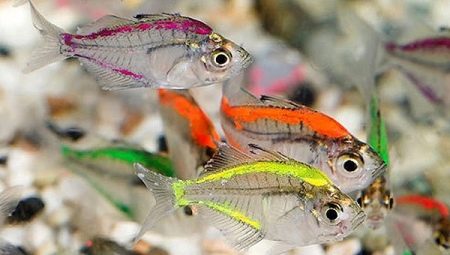The underwater world beckons with its calm, it seems like a real fairy tale and allows a person to escape from everyday problems. No wonder psychologists recommend breeding aquarium fish as a great way to relax and feel better. Such pets differ too much from the person and his other pets, so beginner aquarists are advised to study all the nuances of keeping fish.
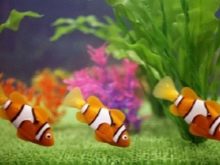

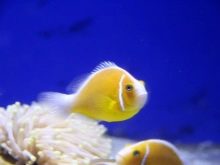
Features
Aquarium fish, in comparison with any other domestic animals, are the least independent animals. Inhabitants of a domestic reservoir cannot do without you - at least they need to be constantly fed and create optimal conditions for them. Therefore, in the vast majority of cases, the aquarium reliably ties you to the house, if, of course, you are not indifferent to the fate of the fish.
Most aquarists tend to divide the inhabitants of the aquarium into relatively simple to care for and more complex, but the principles of care for them in any case should be brought to automaticity.
Even if you find a person who agrees to watch the aquarium in your absence, do not be surprised when his wrong actions or even inaction will cause disastrous consequences.
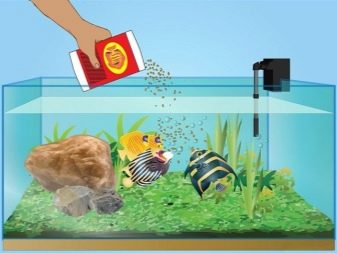
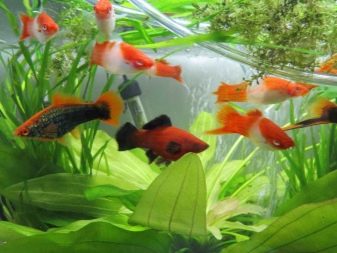
Another important point is that many beginners start fish too irresponsibly. An aquarium dweller is not a cat who is used to the street environment of our latitudes and, in case of urgent need, is able to get its own food or protect its territory.Most inhabitants of the aquarium are visitors from distant southern countries, where the water is always warm and at about the same temperature.
Their comfort depends on indicators that you have never before paid attention to, for example, water hardness or acidity. A sharp change in such indicators for some fish species can be fatal. Surely you will have to buy special equipment, but you need to handle it wisely, because for pets, both the lack of oxygen and its excess are dangerous.
A separate difficulty for beginners is that fish are too general a concept. Different species require different living conditions, diet and so on. Moreover, some of them should not be lodged together, otherwise some of your pets will inevitably regard others as food.
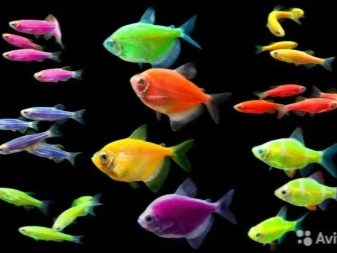
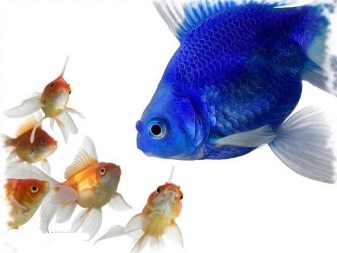
Finally, you need to understand that the aquarium is the decoration of your apartment and, ideally, it should resemble a real underwater world. To do this, do not confine yourself to dishes, water and fish - you need to take care of the selection of the bottom, aquarium plants, any decorations. Again, all this must be selected in a complex, otherwise your concept of aesthetic seabed can be potentially dangerous for living creatures.
It follows that no sensible future aquarist begins to act before drawing up a clear plan of action in his head. All points, including the volume of the aquarium, its design and the compatibility of fish, should be double-checked so that there is no doubt about the correct combination.
Only when you are sure that the planned ecosystem will work adequately can you start spending money on assembling it.
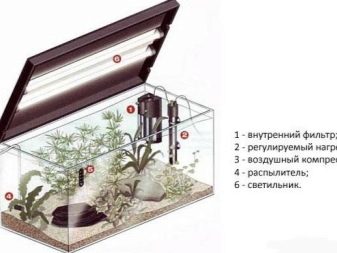
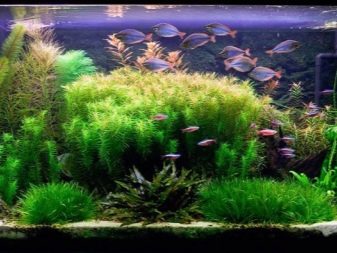
Kinds
Theoretically, many species of fish can live in an aquarium, and if common crucian is unlikely to even be a guest there, then tropical tropical species should be carefully considered. In fact, the range includes dozens and even hundreds of species and breeds, the description of which is simply not enough space, therefore, we will only talk about the most famous and common aquarium inhabitants.
- Pecilian - in the top among beginners, these are the guppies, swordsmen, pecilia, and so on. These fish are viviparous, which means that their owner will not have to bother with nursing eggs. Such pets look very colorful, while the breeders have actively worked on the diversity of their appearance. It is impossible to blame such favorites for whimsicality, which is why they can be considered a “people's choice”.

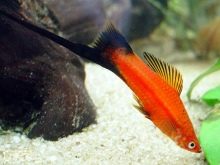

- Cichlids are considered the largest vertebrate species and number about 1300 species. It is not surprising that some of them reached the aquariums. Such living creatures can be either harmless herbivores or aggressive predators, but they all have a very unusual trait for fish - mothers do not abandon their offspring to their fate, much less try to devour them, but they have a maternal instinct and protect the cubs from enemies.
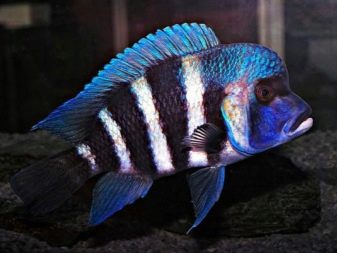
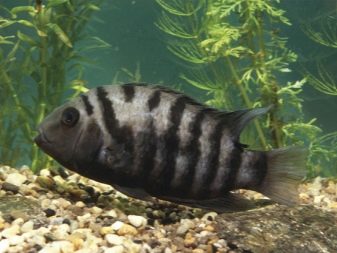
- Catfish highly valued for their unusual appearance - their moustached face is difficult to confuse with anyone else. Such a pet is an aquarium cleaner, and therefore its contents are not only interesting, but also useful. At the same time, such a fish can reach an impressive size, so when buying you should specify what are the maximum sizes of an adult and whether the cubs are in front of you.
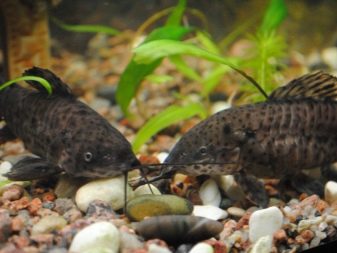
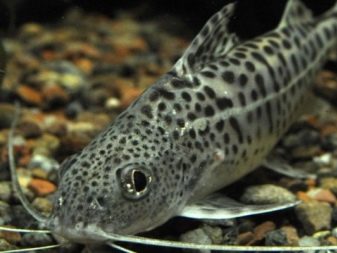
- Labyrinth species unusual in that they breathe air directly from the atmosphere - for this they float to the surface. This peculiarity of breathing allows these fish to settle denser than any other fish, because the oxygen saturation of the water for them no longer matters. For obvious reasons, containers with such living creatures are never closed with a tight lid, ensuring normal air circulation. Labyrinths include such popular pets as gourami, macropods, chelostomy and many others.
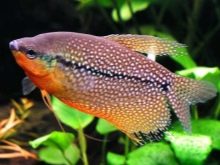
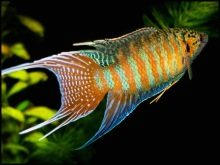
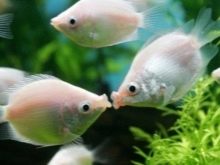
Basic rules for maintenance and care
Buying fish and launching them in the water is far from a complete list of duties of a person who has decided to become an aquarist. Underwater inhabitants settled in a limited and comparatively cramped space cannot rely on natural processes that allowed them to survive in natural water bodies, which means that you will have to work hard so that the pets live and please you with their energy.
The first task is to determine where the aquarium will be located. A beginner usually starts from where there is enough free space in his apartment, and he is very mistaken in this - the location is not determined by this criterion. The fishes require a plausible imitation of daylight, and if the night has officially arrived, it will be wrong that a bright light is on in the room - from it the pets will not be able to sleep and overwork.
The microclimate inside the container is also extremely important - the water must be of a strictly defined temperature, for some types it can be regulated literally to a few degrees, which means that the vessel can no longer be placed where it can be heated by the sun, batteries or any other heating devices.
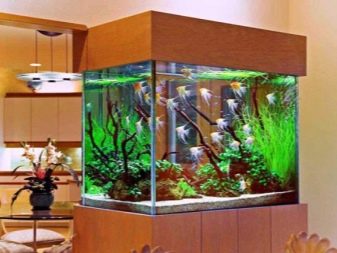
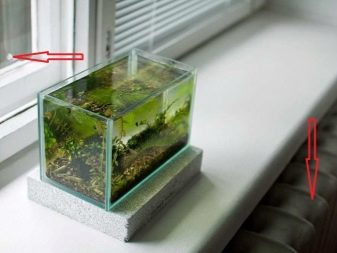
Aquarium equipment, for example, the same compressor or filter, can make a fairly loud noise during operation, but the needs of certain types of fish do not allow you to turn off the equipment never - this means that it will not always be comfortable to sleep near the aquarium. With the choice of the aquarium itself, it is also not so simple, because theoretically it can be small, but then you will put there just a couple of fish that will be bored.
The acquisition of a large aquarium in this context is much more reasonable, because it allows you to put in it a whole flock of inhabitants and combine various compatible species, and cleaning up such an ecosystem, oddly enough, is easier. Another thing is that it is not so easy to choose a place for a large vessel, given all the above criteria for choosing a location.
As already mentioned, the parameters of the aquatic environment are extremely important for keeping underwater pets, and it is on the owner’s shoulders that they are maintained at a constant level. In many ways, specially acquired equipment is responsible for this, but it is unlikely to bring everything to a completely automatic level. Control on your part is still necessary and mandatory.
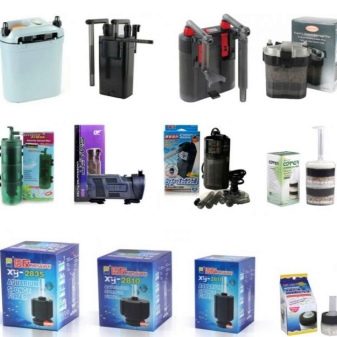
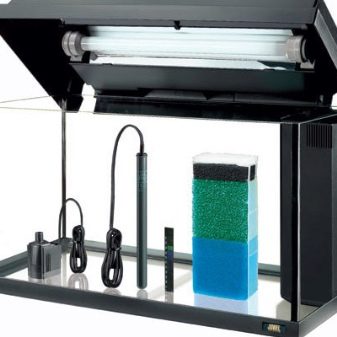
You must monitor at least the following indicators.
- Water temperature. For the predominant part of fish, the norm is water temperature in the range of 22-26 ° C, but for each species it should be specified separately, since the same discus needs more heat (28-31 ° C), and the famous goldfish is looking for coolness (18-23 ° C) In any case, extreme temperature changes remain extremely undesirable, and for those fish that swallow air directly from the atmosphere, its temperature compatibility with water in the aquarium is also needed.
- Hardness of water. This indicator determines how effectively carbon dioxide will dissolve in aquarium water, and it is necessary for the normal functioning of the ecosystem. Tap water usually has a hardness of 10-20 units, while some species of fish that love soft water need only 3-8. To achieve such an indicator, the liquid is passed through reverse osmosis filters, and then mixed with water, reaching the required indicators, but this is, of course, not by eye, but under the control of special measurements.
In this case, the water in the aquarium interacts with soil and stones. Dissolving limestone shells and corals, it increases its rigidity, which is good for some fish, and for others - a disaster.
- Salinity of water. It is no secret that some fish live in fresh water, while others enjoy a sea. When purchasing this or that pet, you are obligated to create plausible living conditions “at home” for it. And if he likes salt water, he will have to regularly add sea salt to the liquid.How much exactly depends on the salinity of the natural reservoir in which the ancestors of your pet lived.
- The gas composition of the water. In a healthy body of water, water is saturated to varying degrees with several types of gases that are productively used by flora and fauna, but in case of an overdose can be dangerous to all living things. The necessary level of oxygen (again, depending on many other parameters) is maintained both with the help of electrical equipment and by planting aquarium plants.
It is also important to keep the ecosystem clean. Carbon dioxide in large quantities can harm fish, but it is necessary to maintain the vital activity of plants, so you need to make accurate measurements and look for reasonable concentrations. Hydrogen sulfide and methane are removed from the liquid in any case - they are present only in contaminated water bodies and poison your living creatures.
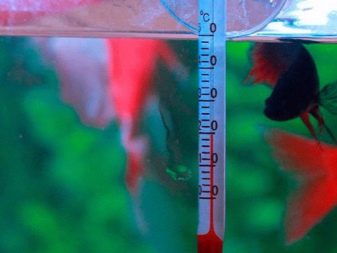
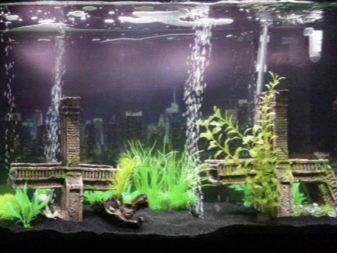
The water in the aquarium must be cleaned using special filters that trap and trap harmful particles. Filter maintenance should be regular - you need to ensure that they are not clogged and clean them in a timely manner. However, even the availability of such equipment does not relieve the owner of the need for regular water changes.
Changing all the water at once is extremely undesirable, because colonies of bacteria that break down fish waste are already present in it.
And also this is not recommended because you are unlikely to succeed in accurately reproducing all the characteristics of the water so that the living creature does not feel changes.
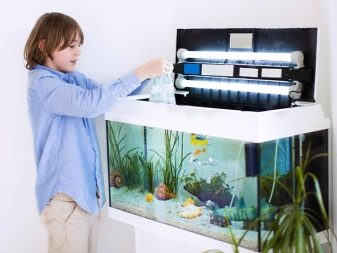
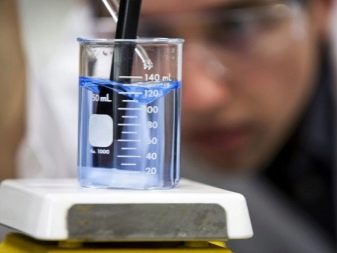
For this reason, usually no more than 1/3 of the water is replaced at a time; the need for such a procedure arises on average once a week. Exceptions in favor of a rarer execution are possible if you organize the correct operation of the ecosystem, buy good filters and not populate the aquarium with inhabitants too densely.
Before entering the aquarium, tap water needs preliminary preparation, otherwise gaseous chlorine and other undesirable impurities from the pipes will be in the pond with it. To avoid this, experts advise settling the liquid in a shallow wide vessel for 24 hours - during this time gaseous impurities will evaporate into the atmosphere, and insoluble precipitate.
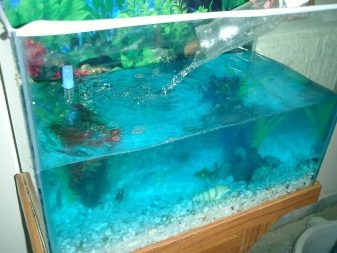

Full replacement of water is allowed only in an emergency situation, when your ecosystem by all indications suffers greatly from any distortions. Such a step is justified if all living creatures died from the outbreak of the disease, fungal mucus excessively grew in the pond, and abundant flowering of water is observed. However, with a complete change of water, you still greatly risk the vegetation - in such situations, it can discolor or lose leaves.
It is important to feed your water fauna in a timely and correct manner. Suitable feed options for each species are your own - you should be interested in this when choosing a pet. Experts advise feeding adult fish 1-2 times a day, while once a week they arrange a fasting day when they are not given food at all.
Actively growing babies need more frequent feeding - they are fed 4-5 times daily, and fasting days may be irrelevant.

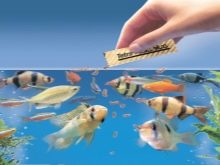

It is advisable to calculate the dosage of food in accordance with the needs of their own pets - they must eat everything that you gave within literally 2-3 minutes, otherwise the leftovers will be deposited at the bottom and cause unnecessary bacteria to multiply. In this case, overfeeding is dangerous, even if the pets seem to cope with the entire volume of food.
Freshwater species are usually considered less whimsical in terms of the choice of food - the priority is perhaps only the alternation of different types of products. If several species of fish live in your aquarium and eat the same food, but live in different layers of water, you must make sure that those that live near the surface leave food for the bottom species.
Lighting is useful for many fish, it is also necessary for people who want to admire their pets. However, focusing more on it is precisely on the preferences of the fish themselves, since one does not need extra light at all and there will be enough natural light, while others even require night lighting. The average light rating is usually denoted as 0.5 watts per liter of water, but you should understand that in a wide and shallow aquarium this will give one degree of illumination, and in a thin and narrow but deep a completely different one.
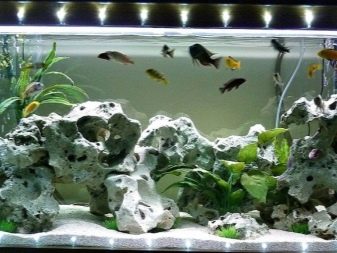
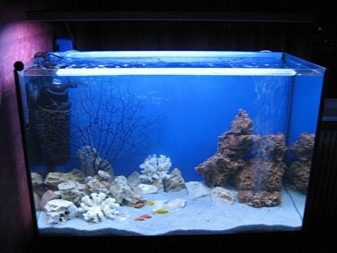
What kind of fish is better to get at home?
Globally, the choice of aquarium pets does not seem limited at all, but for a beginner, most options are not available for logic reasons. Having no experience in caring for even unpretentious species, you are unlikely to cope with more demanding fish. Given that novice aquarists rarely acquire tanks of a truly large size, pets also need to choose small ones, especially since they usually are unpretentious.
If you buy an aquarium specifically in order to get the famous goldfish or very bright and attractive males, you will have to face disappointment - they just do not belong to easy care, so you should start with someone else.
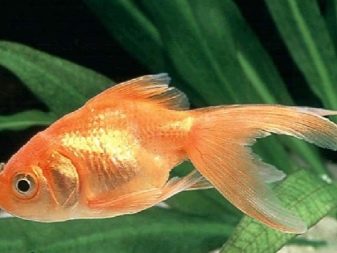
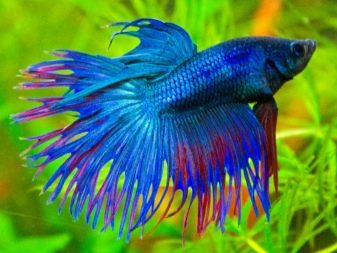
One of the most obvious choices for a beginner is rightly considered guppies, which will teach you how to handle the Pecilian family. Such fish have long been registered in most aquariums. These fish are interesting from all sides - they are found everywhere and are sold in any pet store, have an attractive bright color, and belong to live-bearing species.
At the same time, they cannot be called very tiny - if the males are still quite small (3-4 cm in length), then the females are quite noticeable (up to 6 cm). These beauties eat plant food, and all care for them includes timely feeding and regular cleaning of the aquarium with intensive aeration.
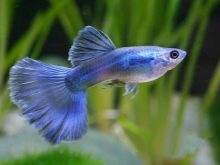
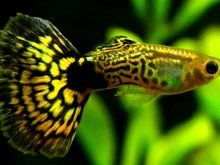
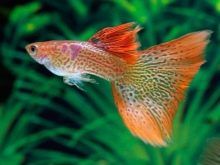
As an alternative to the Peciliae, cichlids are often considered. This group of fish is often considered extremely predatory, which is not entirely true - there are both really toothy and dangerous species, as well as herbivores and omnivores. Predators are usually not advised to beginners - they require special care and are deadly for any of their cohabitants, but usually there are no problems with omnivorous and herbivorous species.
The advantage of cichlids is the fact that they can live alone, and therefore they can be wound up at minimal cost, when you are still not completely sure that aquarium is yours.

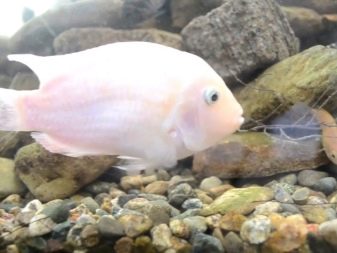
Where to start breeding at home?
The first thing to do is choose a suitable aquarium. Surely at this point you already have an idea of what kind of fish you would like to see in your home artificial pond, and read about what requirements they put forward to their living environment. According to these requirements, it is determined how the aquarium will look - how many liters of water should be in it, what shape it will be. Determining with tank dimensions you inevitably need to build on where it will be installed. Recall required a place where you can adjust the lighting and temperature regardless of the comfort of those around you.
Fortunately, the times when the fish were brought up in an ordinary three-liter jar are long gone, so you should decide on a set of equipment that will support the normal functionality of the ecosystem. It all depends on the needs of the fish and the characteristics of the aquarium. At least you need to take care of filtering enough water aeration, lighting and, perhaps, heated. The same will not hurt thermometer, clearly showing what is the temperature of the aquatic environment at the moment - so you can respond in a timely manner to any deviations from the norm.
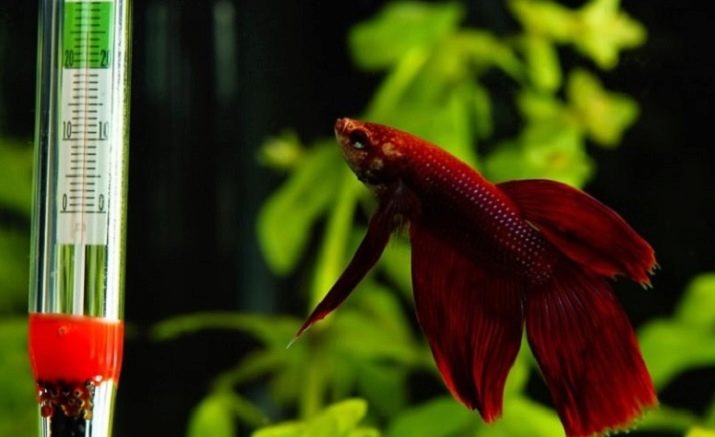
Trying to create a complete and believable imitation of a corner of the underwater world, you must take care of planting plants. They can have many functions - they eliminate harmful carbon dioxide from the water and turn it into useful oxygen, can serve as food for fish in your absence, and are also a good shelter. Even if the fish in the aquarium have no natural enemies, this does not detract from the performance of its instincts.
It is necessary to determine the vegetation depending on the specific inhabitants who will live in the aquarium, because practically no plant is a priori useful - many of them, for example, in the dark do not only release oxygen, but also absorb it from the water.
If your aquarium is just making its debut as a living environment for living things, it’s important to properly prepare it for this. - by the time of settlement there should already be an adequate ecosystem with microscopic inhabitants that you don’t even see. Experienced aquarists advise, “having assembled” the aquarium, not to lodge anyone there for a week, so that the microflora develops to the level where it can cope with the waste products of new residents.
In principle, you can not do this if you buy special capsules like a biostarter or biocorin - both are just living colonies of such microflora.
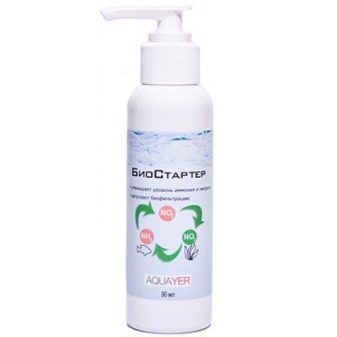
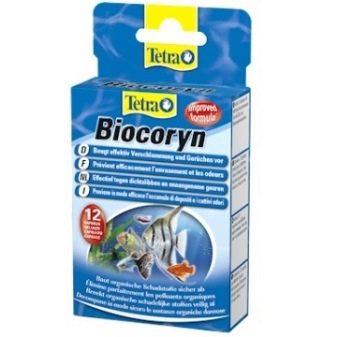
If this is your second aquarium, and the first is in its current form, you can go the other way - you just need to pour a few liters of water from the old tank into a new one. An alternative is to moisten the sponge in the old and then squeeze it into a new one. If the presence of water from a “working” ecosystem is significant, the waiting period before launch will be greatly reduced and will be only 2 days.
Running fish does not at all involve any difficulties - the water with them is simply poured into the aquarium. In this case, it is extremely important to ensure that the liquid in the aquarium and the tank with the fish is approximately the same in all respects, otherwise the difference in conditions can extremely negatively affect the health of the pets.
A future aquarist must at least just warm the water with the fish to room temperature (especially if there is no heater in the aquarium) and only then let the pets into the pond.
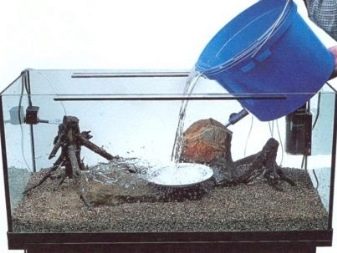
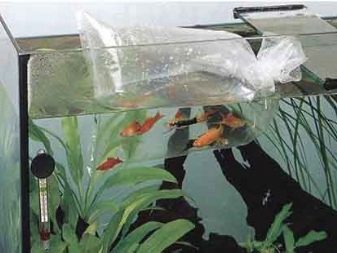
Importance of Compatibility
Pet incompatibility can lie in different characteristics, the most obvious is the risk that the predator will eat its herbivorous neighbor. Other incompatibility options suggest that pets need fundamentally different care, for example, some like cool water, while others need its elevated temperature. The same differences may apply to other water parameters, including hardness, acidity and so on.
To make the alignment work fine, follow the simple rules.
- All aquarium inhabitants should be approximately the same size. Fish eats its prey only in its entirety, and if the dimensions of the rivals are the same, they will not eat each other.
- Pet temperament should be similar. There are playful species that constantly frolic - they will be more appreciated by those who support their activity. Conversely, a too calm fish may be annoyed by the fact that its neighbors do not follow the “decency rules”.
- Combine wisely. If you still decide to settle two or three species of fish or more together, place “fellow countrymen” in one aquarium — since they can live together in the wild, it means that it will succeed in the aquarium. Alternatively, go the opposite way: choose a whimsical fish, and add to it one that is undemanding and agrees to “imposed” living conditions.

If your pets may be incompatible due to too different characters, this does not mean that they should be put an end to their combination. Follow the tips below to make it work.
- A spacious aquarium will accommodate everyone. Calm fish can settle in quiet corners, while the free center is occupied by active colleagues.
- Those who want to retire should have this opportunity. While someone is frolicing and needs a lot of space for this, other fish want nobody to bother them. Equipment shelters will help to separate them from too active neighborhood. Zoning the aquarium can even be done with dense thickets - it will be even more interesting.
- Lack of food is a common cause of aggression. It is no secret that even a predator, while it is full, often does not want to attack anyone. There is also the opposite situation, when a fish mistakenly takes alien flying fins for food and nibbles them. To prevent this from happening, feed your pets regularly, in sufficient quantities and in a balanced manner.
- Accustom to something unusual is better since childhood. Fishes of different temperament do not perceive each other so critically if they live together with their youth, but the sharing of two adult populations with each other will certainly cause rejection.
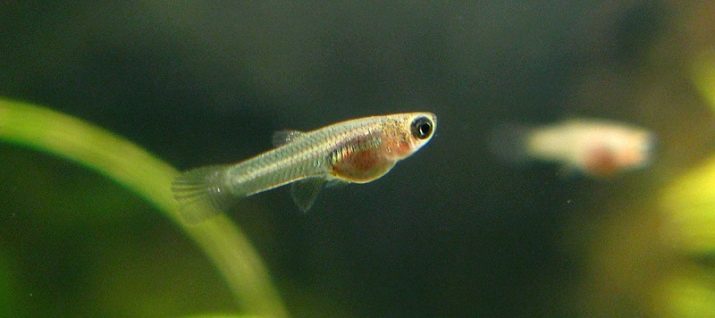
Interesting Facts
Finally, a few curious facts that may further fuel your growing interest in aquariums.
- You don’t need to be a specialist to understand that a fish swimming upside down is bad. However, for some catfish this behavior is normal and does not mean anything bad.
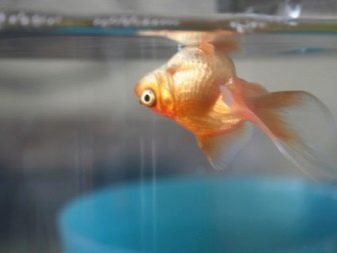

- While you are puzzling over how to combine two types of fish in one aquarium, At the Radisson Hotel in Berlin, Germany, the aquarium is populated by 56 species at once! This cylindrical pond is considered the largest in the world; its height alone is 25 meters.

- Since we are talking about dimensions, we recall the smallest aquarium. It is no bigger than a matchbox - only 3 cm long and 1.5 cm wide! Incredibly, this is not just a toy - inside there are both living plants and live fish.
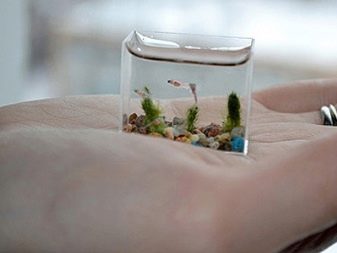
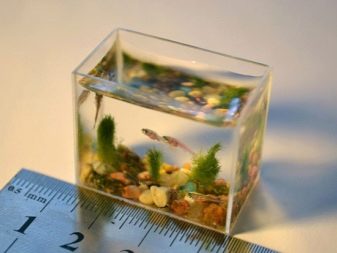
- Astronotus ocellatus is rightly considered the largest aquarium fish - the length of her body can reach an impressive 35 cm.
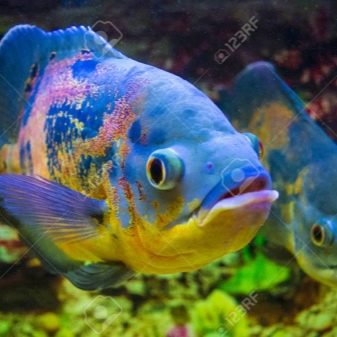
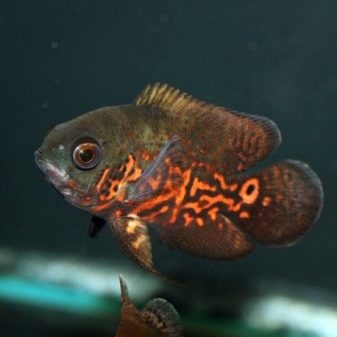
- In one of the aquariums, a female eel once lived a long 88 years. Having got such a pet, you have every chance to pass it by inheritance.
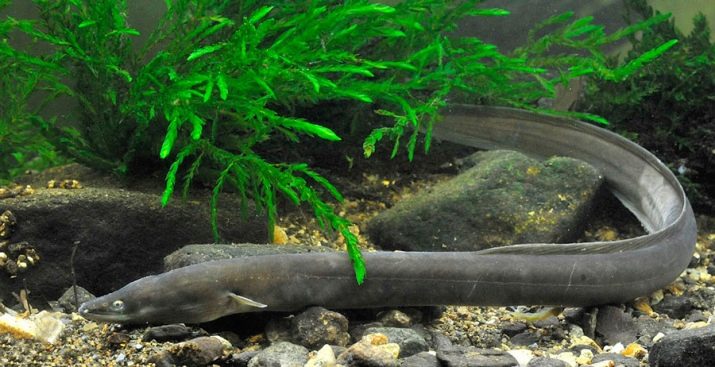
- Akantikus is completely non-hostile when it comes to fish of other species. Whether it is a matter of fellow tribesmen, he simply hates them and is trying to destroy them with all his might.

- Clown fish cannot be born female - All representatives of this species from birth are males. Only then will nature itself decide who will acquire functions that are unusual for individuals from birth.
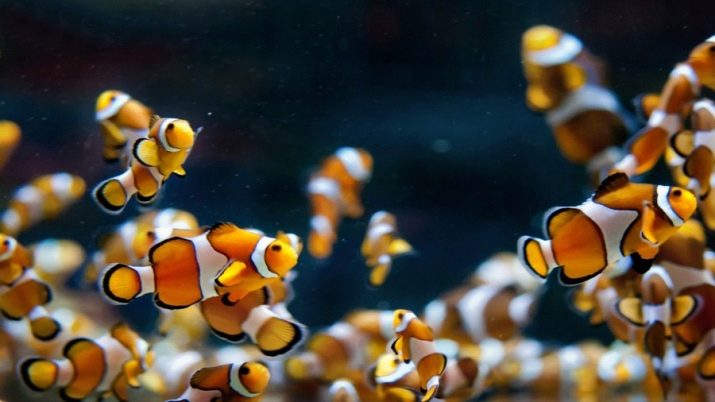
Top 10 most unpretentious fish waiting for you in the next video.
